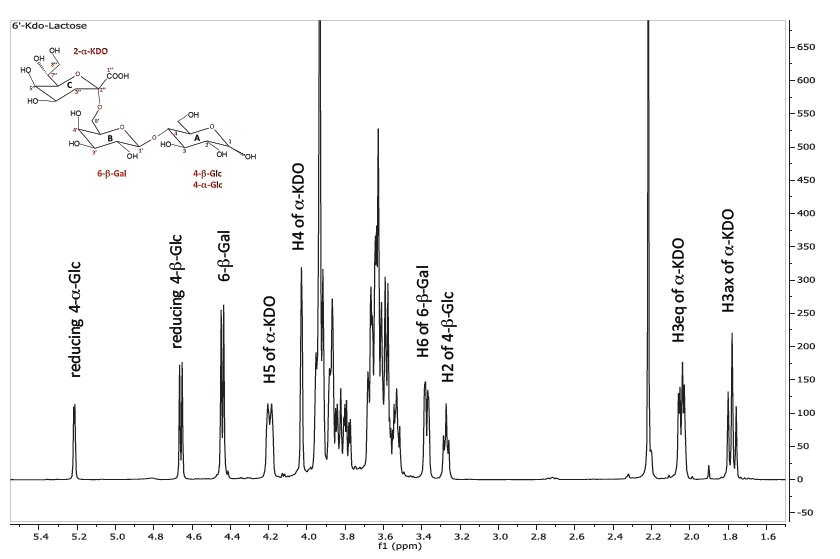Routine Services
One dimensional proton NMR spectrum of a trisaccharide. Chemical shifts can be used for N-glycan identification using structural reporter groups.
Nuclear Magnetic Resonance (NMR)
We use both one dimensional and two dimensional nuclear magnetic resonance to determine the monosaccharide residue sequence of polysaccharides repeating units and oligosaccharides.
One-Dimensional Nuclear Magnetic Resonance
In NMR Define the types of anomeric configuration (a,b) present, and also provide information about non-carbohydrate substituents, such as acetyl or pyruvyl moieties.
This analysis also provides information about the purity of the carbohydrate. Both 13C-NMR and 1H-NMR give information regarding the number of monosaccharide residues contained in the repeating glycosyl units of a polysaccharide if it is composed of a repeating sequence. 13C-nuclear magnetic resonance can provide some information regarding glycosyl linkage and can detect the presence of unusual or rarely observed sugars.
Overlaid two dimensional HSQC spectra of a bacterial polysaccharide allows minor differences to be determined between the structures.
Two-Dimensional NMR
If a sufficient amount of pure polysaccharide (>5 mmol) is available, 2-D NMR spectroscopy is probably the single most powerful technique for the elucidation of the precise carbohydrate structure. A routine set of experiments for structure determination of a polysaccharide would include COSY, TOCSY, HSQC, HMBC, and NOESY


